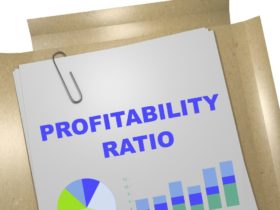Return ratios
Return ratios are a group of ratios, which are also part of profitability ratios. These ratios are different from margin ratios that were discussed earlier. Return ratios help investors to determine how efficiently a company manages its capital for various investments and in generating profit. Capital is nothing but funds raised through equity or debt. Equity capital is raised by issuing shares to investors. One of the ways is through initial public offering. Debt capital is raised through issuing corporate bonds, where interest needs to be paid by the company periodically to bondholders.
There are quite a few return ratios, but we will discuss the most important and popular return ratios.
Return on Equity: This is one of the most popular return ratios among investors. Long-term Investors keenly look at this number before selecting a particular stock. It is a ratio which is used to measure efficiency of a company in making use of shareholders’ funds to generate good profits. Higher ROE ratio is good for a company and shareholders because the company is less dependent on bonds or debt to raise capital and the company is also good at generating better returns for shareholders.
Return on Equity = Net income after tax/Shareholders’ equity
where, Shareholders’ equity = Funds raised through equity share capital + reserves
Return on Capital Employed: It is slightly different from ROE, because, while calculating ROCE, we have to take into account all forms of funds raised through equity and debt. One more difference is we take earnings before interest and taxes (EBIT) and not net profit after tax. Higher ROCE indicates a company is good at using both forms of capital.
ROCE = EBIT/Total capital employed
where, Total capital employed = Shareholders’ funds + Debt capital (or)
Total capital employed = Total assets – Current Liabilities
Return on Assets: This ratio is used to evaluate a company’s profitability to its total assets and it is represented as a percentage. It shows the company’s efficiency in generating net income using the assets available. It also tells whether a company is asset intensive or not. Companies in the infrastructure industry, manufacturing sector, heavy industries, etc. are likely to have lower ROA as they are asset intensive.
ROA = Net Income/Total Assets

